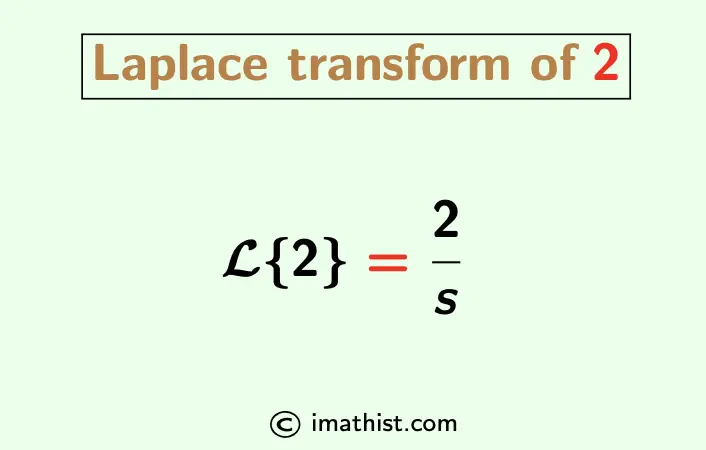The Laplace transform of 2 is equal to 2/s, and it is denoted by L{2}. Lets find the Laplace of 2 by the definition of Laplace transforms.
Recall, the Laplace of f(t) by definition is given by the following integral:
L{f(t)} = $\int_0^\infty e^{-st} f(t)\,dt$

Laplace of 2
By the above definition, the Laplace of 2 is equal to
L{2} = $\int_0^\infty 2e^{-st} dt$
= 2 $\int_0^\infty e^{-st} dt$
= 2 $\Big[\dfrac{e^{-st}}{-s} \Big]_0^\infty$
= 2 $\Big(\lim\limits_{t \to \infty}\dfrac{e^{-st}}{-s} -\dfrac{e^{0}}{-s} \Big)$
= 2 $\Big(0 +\dfrac{1}{s} \Big)$
= $\dfrac{2}{s}$.
So the Laplace transform of 2 is equal to 2/s, and it is proved by the definition of Laplace transforms. That is,
| L{2} = 2/s. |
Also Read:
FAQs
Q1: What is the Laplace transform of 2?
Answer: The Laplace transform of 2 is equal to 2/s, that is, L{2} = 2/s.